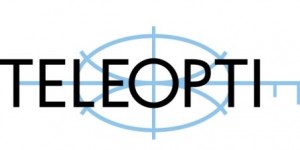Making life easier for customers is the first step towards brand loyalty and business success. Magnus Geverts at Teleopti shares his eight top tips for reducing customer effort in contact centres.
 All customers want is a quick and easy answer to their enquiries. It might sound simple but the two biggest annoyances for customers, which are having to repeat themselves and being transferred from department to department[i], can do untold damage to an organization’s reputation and revenues.
All customers want is a quick and easy answer to their enquiries. It might sound simple but the two biggest annoyances for customers, which are having to repeat themselves and being transferred from department to department[i], can do untold damage to an organization’s reputation and revenues.
Every week I meet with contact centre executives struggling to break down the silos in an effort to create consistency across all channels. Making it easy for customers requires hard work.
In today’s viral world of social media, the risks of upsetting customers are even higher as dissatisfied consumers take out their frustrations via Facebook, Twitter and TripAdvisor. In fact, according to the Institute of Customer Service, 58% of people would stop buying from a company as a result of poor customer service and, even scarier, 70% of them would actively discourage others from engaging with a company when given poor customer service.[ii]
Winning contact centres are those that deliver quick fixes, instant results and exceptional customer satisfaction. It all comes down to giving customers what they want with very little effort on their part. Put yourself in your customers’ shoes and ask, “How do I make life easier for my customers?” It’s time to review your processes and technology – here are a few tips to point you in the right direction.
Eight tips for designing service to reduce customer effort
1. Find the right people – your agents are your most valuable asset but gone are the days when all they had to do was answer as many calls as possible as quickly as possible. Today’s ‘super agents’ must be capable of solving complex problems for customers so look for highly flexible, emotionally intelligent candidates with a positive ‘can-do’ attitude, train them properly and keep them motivated. Use Workforce Management (WFM) technology to create a ‘go-to’ place for all your talent and resources. Use it to flag up skills gaps, build meaningful training programs and combine with Real-Time Management capabilities to set up training during idle time. Then, maximize WFM to schedule your right-skilled agents to the right place at the right time.
2. It’s the simple things that count – prominently display freephone customer support telephone numbers on every web page, enable agents to conduct Web Chat and keep FAQs up-to-date and easy to find. Be sure to share customer stories with other parts of the organization to create a unified understanding and response to common customer issues.
3. Make time to understand your customers – listen to your agents – they know if your customers are happy and what works and remember to devise a mechanism for agents to share hints and tips. Then combine agent feedback with speech analytics and silent monitoring to capture the voice of the customer. The more you understand what makes your customers tick, the more effective you’ll be at deploying efficient processes and technology to support enhanced customer interactions.
4. Automation is the way to go – it tangibly enhances the customer experience. Take Web Chat, where automated Chatbots can be used as the first line of enquiry. Chatbots can be programmed to perform more mundane tasks using automated responses in Chat before the customer is connect to a human at the right time.
5. Up your self-service game – the latest Artificial Intelligence (AI) driving contact center solutions include self-service capabilities that allow people to find out information, ask questions, broker a mortgage, book their next holiday, buy the latest must-have gadget or fashion item and return a faulty kettle at a time to suit them without having to speak to a single human being. Think about it, could you reduce customer effort by introducing a wider use of self-service?
6. Make mobility work for you – consumers expect to use their mobile devices to find information, ask questions and access social media to connect with their favorite brands 24 hours a day. Make sure your customer service is fully optimized for mobility with a fully responsive website, by offering Web Chat and by providing a choice of different contact options such as SMS, Facebook Messenger, WhatsApp and Twitter.
7. Omnichannel is the new multichannel – modern consumers want a consistent, satisfying and effortless experience, every time, whatever the device or communication channel. They also want organizations to recognize their buying history and previous interactions so they don’t have to keep repeating themselves. The latest technology solutions automatically flag up how customers want to interact. From the same screen agents can switch between telephone, emails and Chat to deal with enquiries whatever the channel. This often requires extensive integration of back-end systems or a complete rebuild of the back-end systems which feed your customers and agents with information.
8. Chatbots – can provide anything from automated subscription content like weather and traffic updates, to tailored communications such as receipts, shipping notifications and live automated messages – fast. Customizable greetings mean Chatbots make it possible to offer a more personal, more proactive, and more streamlined customer experience.
Take a step back, put yourself in your customers’ shoes and see what their experience is really like. You might need to overhaul your approach to customer service completely or perhaps a few simple tweaks will suffice. Either way, design your service strategy to give your customers first-class service, with very little effort on their part, for brand loyalty and business success.
Additional Information
 Magnus Geverts is Chief Business Development Officer at Teleopti
Magnus Geverts is Chief Business Development Officer at Teleopti
Teleopti, is a global provider of workforce management (WFM) software, offering a WFM solution that is sophisticated, localised and easy to use. As the largest “best-of-breed” vendor, Teleopti focuses on helping contact centres, back offices and retail stores improve customer service, employee satisfaction and profitability – through optimized, automated forecasting and scheduling.
Teleopti provides everything necessary to effectively manage staff, forecast demand, create schedules automatically, develop accurate and insightful reports and improve overall customer satisfaction.
Founded in 1992, Swedish-established Teleopti has customers in over 80 countries, numerous offices around the world – from Beijing to São Paolo – and a comprehensive global network of partners. With a record of continuous net profitability for over 20 years and with high customer satisfaction ratings, Teleopti serves as a reliable partner.
For additional information on Teleopti visit their Website or view their Company Profile



